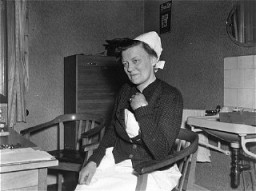You searched for: 智能合约系统快速搭建【TG���������@EK7676】平台包网搭建智能合约系统快速搭建【TG���������@EK7676】平台包网搭建7nF3T1uScR
<< Previous | Displaying results 1-50 of 245 for "智能合约系统快速搭建【TG���������@EK7676】平台包网搭建智能合约系统快速搭建【TG���������@EK7676】平台包网搭建7nF3T1uScR" | Next >>
-
Subsequent Nuremberg Proceedings, Case #7, The Hostage Case
ArticleThe Hostage Case was Case #7 of 12 Subsequent Nuremberg Proceedings against leading German industrialists, military figures, SS perpetrators, and others.
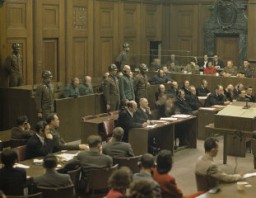
-
The Weimar Republic
SeriesSeries of articles on the Weimar Republic (1918–1933), a liberal democratic republic founded in Germany in the aftermath of World War I.
-
Jewish Parachutists from Palestine
ArticleLearn about a group of Jewish men and women from Palestine who parachuted into German-occupied Europe to organize resistance and aid in the rescue of Allied personnel
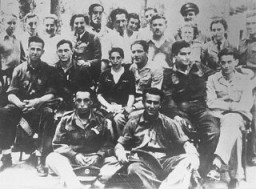
-
The Holocaust and World War II: Key Dates
ArticleRead a detailed timeline of the Holocaust and World War II. Learn about key dates and events from 1933-45 as Nazi antisemitic policies became more radical.

-
Heinrich Himmler: Key Dates
ArticleHeinrich Himmler was the leader of the dreaded SS of the Nazi Party from 1929 until 1945. Learn more about key dates in the life of Heinrich Himmler.
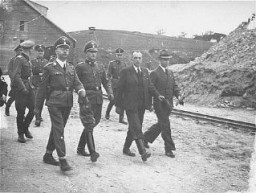
-
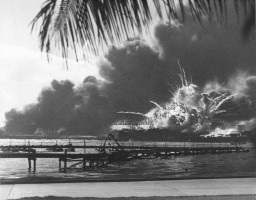
-
World War II Dates and Timeline
ArticleWorld War II was the largest and most destructive conflict in history. Learn about key WWII dates in this timeline of events, including when WW2 started and ended.
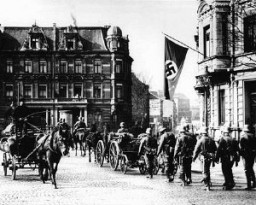
-
1942: Key Dates
ArticleExplore a timeline of key events during 1942 in the history of Nazi Germany, World War II, and the Holocaust.
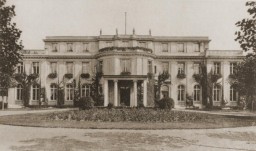
-
View of the Hadamar Institute
PhotoView of the Hadamar Institute. This photograph was taken by an American military photographer soon after the liberation. Germany, April 7, 1945.
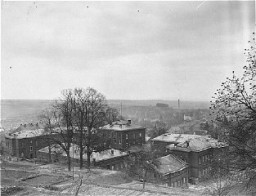
-
View of the Hadamar main building
PhotoExterior view of the Hadamar main building. The photograph was taken by an American military photographer soon after the liberation. Germany, April 7, 1945.
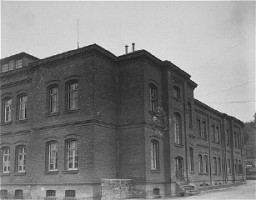
-
Soviet soldiers in defeated Berlin
PhotoSoviet soldiers in a street in the Soviet occupation zone of Berlin following the defeat of Germany. Berlin, Germany, after May 7, 1945.
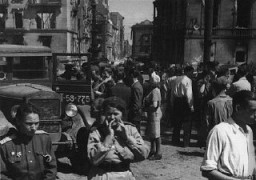
-
Remilitarization of the Rhineland
PhotoDuring the remilitarization of the Rhineland, German civilians salute German forces crossing the Rhine River in open violation of the Treaty of Versailles. Mainz, Germany, March 7, 1936.
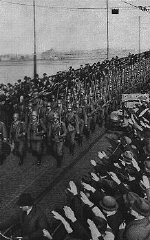
-
An anti-Masonic exhibition at a Berlin museum
PhotoPhotograph of a display entitled "British Freemasonry." It appeared in an anti-Masonic exhibition at a Berlin museum. Germany, March 7, 1941.
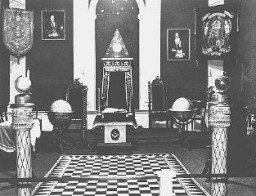
-
Killing Center Revolts
ArticleUnder the most adverse conditions, prisoners initiated revolts in killing centers. Learn more about prisoner uprisings in Treblinka, Sobibor, and Auschwitz.
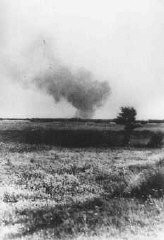
-
1945: Key Dates
ArticleExplore a timeline of key events during 1945 in the history of Nazi Germany, World War II, the Holocaust, and liberation and the aftermath of the Holocaust.
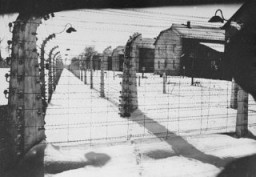
-
Pearl Harbor
ArticleJapan’s aerial attack on Pearl Harbor changed many Americans' attitudes toward involvement in WWII. Learn more about the events, facts, and background info.

-
Railcar: Interior
ArtifactMany different kinds of railway cars were used for deportations. They varied in size and weight. The railway car on display in the United States Holocaust Memorial Museum's Permanent Exhibition is of just one type used. The dimensions of the railway car in the Museum's exhibition are as follows: Total length 31 feet 6 inches (9.6 meters); interior space for deportees 26 feet 2 inches (8 meters). Total height 14 feet (4.3 meters) from the bottom of the wheel to the highest point of the car; interior space…
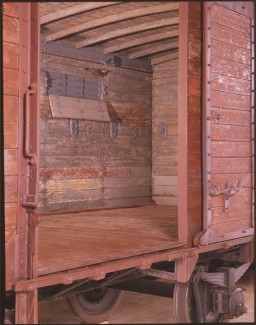
-
Valises by the railcar in the Museum's Permanent Exhibition
ArtifactMany different kinds of railway cars were used for deportations. They varied in size and weight. The railway car on display in the United States Holocaust Memorial Museum's Permanent Exhibition is of just one type used. The dimensions of the railway car in the Museum's exhibition are as follows: Total length 31 feet 6 inches (9.6 meters); interior space for deportees 26 feet 2 inches (8 meters). Total height 14 feet (4.3 meters) from the bottom of the wheel to the highest point of the car; interior space…

-
Portrait of Herschel Grynszpan
PhotoPortrait of Herschel Grynszpan taken after his arrest by French authorities for the assassination of German diplomat Ernst vom Rath. Grynszpan (1921-1943?). Born in Hannover, Germany, was the son of Polish Jews who had immigrated to Germany. In 1936 Grynszpan fled to Paris. On November 7, 1938, after having learned of the expulsion of his parents from Germany to Zbaszyn the Polish frontier, Grynszpan assassinated Ernst vom Rath, the third secretary of the German embassy in Paris. The diplomat's…
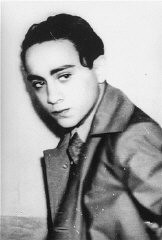
-
World War II in the Pacific
ArticleThe United States declared war on Japan on December 8, 1941, following the attack on Pearl Harbor. Learn more about World War II in the Pacific.
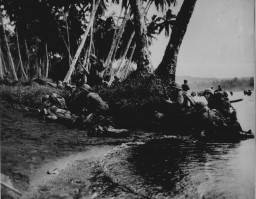
-
German Railways and the Holocaust
ArticleThe European rail network played a crucial role in the implementation of the Final Solution. Millions were deported by rail to killing centers and other sites.
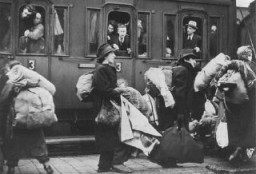
-
Our Life newspaper: Allied victory
DocumentNewspaper Our Life, for September 7, 1945, showing the headline "Long Live Allied Victory". [From the USHMM special exhibition Flight and Rescue.]
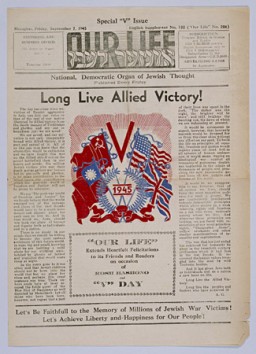
-
The defendants in the Hostage Case
PhotoThe defendants in the dock (at rear, with headphones) and their lawyers (front) follow the proceedings of the Hostage Case, case #7 of the Subsequent Nuremberg Proceedings. Nuremberg, Germany, 1947-48.
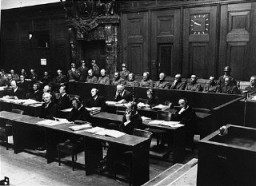
-
Burial of victims killed at the Wöbbelin camp
PhotoAfter the liberation of the Wöbbelin camp, US troops forced the townspeople of Ludwigslust to bury the bodies of prisoners killed in the camp. Germany, May 7, 1945.
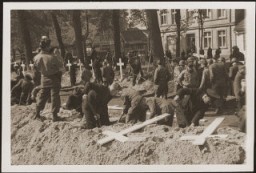
-
Funeral for victims of Wöbbelin
PhotoAfter the liberation of the Wöbbelin camp, US troops forced the townspeople of Ludwigslust to bury the bodies of prisoners killed in the camp and give the victims a proper burial. This photograph shows the funeral for the victims. Germany, May 7, 1945.
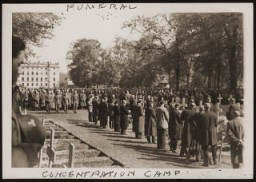
-
Funeral service for victims of the Wöbbelin camp
PhotoAfter the liberation of the Wöbbelin camp, US troops forced the townspeople of Ludwigslust to bury the bodies of prisoners killed in the camp. This photograph shows American troops at the funeral service for the victims. Germany, May 7, 1945.
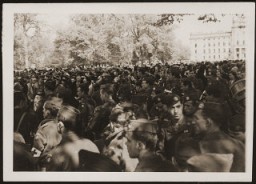
-
Burial of victims of the Wöbbelin camp
PhotoAfter the liberation of the camp, the US Army ordered the local townspeople to bury the corpses of prisoners killed in the camp. This photograph shows troops observing a moment of silence at a mass funeral for victims of the Wöbbelin camp. Germany, May 7, 1945.

-
Funeral for victims of Wöbbelin
PhotoAfter the liberation of the Wöbbelin camp, US troops forced the townspeople of Ludwigslust to bury the bodies of prisoners killed in the camp. This photo shows US troops assembled at the mass funeral in Ludwigslust. Germany, May 7, 1945.
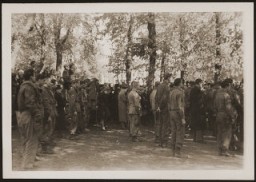
-
Liberated prisoners at Ebensee
PhotoPrisoners at the time of liberation of the Ebensee camp, a subcamp of the Mauthausen concentration camp. This photograph was taken by US Army Signal Corps photographer Arnold E. Samuelson. Austria, May 7, 1945.
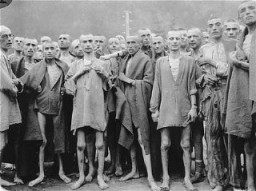
-
A protest by displaced persons
PhotoDisplaced persons protest the forced return to Germany of passengers from the refugee ship Exodus 1947. British Foreign Secretary Ernest Bevin is hanged in effigy. Photograph taken by Henry Ries. Hohne-Belsen, Germany, September 7, 1947.
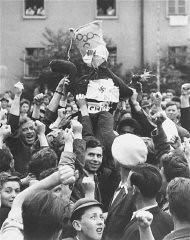
-
Identification card of Berthe Levy Cahen
PhotoIdentification card of Berthe Levy Cahen, issued by the French police in Lyon, stamped "Juif" ("Jew"). France, August 7, 1942.
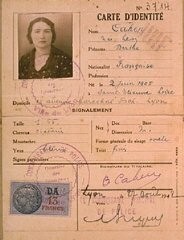
-
Internally displaced persons camp in Iraqi Kurdistan
PhotoAn elderly Yazidi woman tends to young children beside a half-constructed building in an internally displaced persons (IDP) camp where they live in Duhok, Iraqi Kurdistan. September 7, 2015.

-
Attack on Pearl Harbor
PhotoSmoke billows out from US ships hit during the Japanese air attack on Pearl Harbor, Hawaii, December 7, 1941.
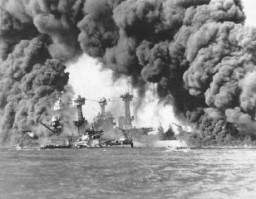
-
Display at an antisemitic and anti-Masonic exhibition in Berlin
PhotoA display, entitled "British Freemasonry," at an antisemitic and anti-Masonic exhibition in Berlin. The display shows a Torah scroll and a picture of King Edward bearing Masonic regalia. Berlin, Germany, March 7, 1941.
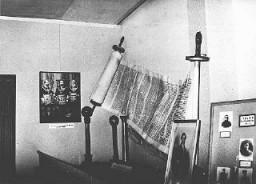
-
Emmi G., a victim of the Euthanasia Program
PhotoEmmi G., a 16-year-old housemaid diagnosed as schizophrenic. She was sterilized and sent to the Meseritz-Obrawalde euthanasia center where she was killed with an overdose of tranquilizers on December 7, 1942. Place and date uncertain.
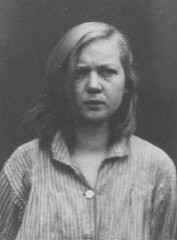
-
World War II in Europe
ArticleGermany started World War II in Europe on September 1, 1939, by invading Poland. War would continue until 1945. Learn more about WWII and genocide in Europe.
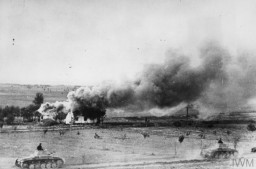
-
Berlin-Marzahn (camp for Roma)
ArticleThe Berlin-Marzahn camp was established a few miles from Berlin's city center, for the detention of Roma, on the eve of the 1936 summer Olympics.
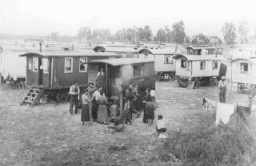
-
Dismissal letter
DocumentDuring the interwar period Dr. Susanne Engelmann served as the principal of a large public high school for girls in Berlin. This letter notified her of her dismissal, as a "non-Aryan," from her teaching position. The dismissal was in compliance with the Civil Service Law of April 7, 1933. On April 7, the German government issued the Law for the Restoration of the Professional Civil Service (Gesetz zur Wiederherstellung des Berufsbeamtentums), which excluded Jews and political opponents from all civil…
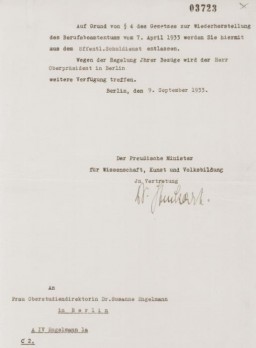
-
Night and Fog Decree
ArticleThe "Nacht und Nebel" decree allowed German authorities to capture without trace ("by night and fog") and try individuals alleged to be "endangering German security."
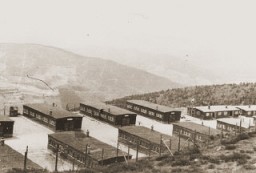
-
Bergen-Belsen: Key Dates
ArticleExplore a timeline of the history of the Bergen-Belsen camp in the Nazi camp system. Initially a POW camp, it became a concentration camp in 1943.
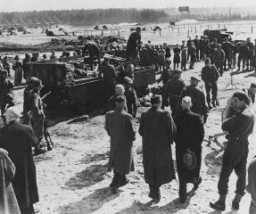
-
The "Night of Broken Glass"
ArticleOn November 9–10, 1938, the Nazi regime coordinated a wave of antisemitic violence in Nazi Germany. This became known as Kristallnacht or the "Night of Broken Glass."
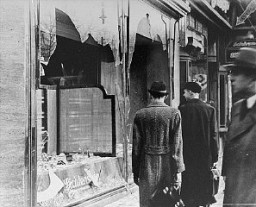
-
International Holocaust Remembrance Day
ArticleJanuary 27, anniversary of the liberation of Auschwitz, is designated by the United Nations General Assembly as International Holocaust Remembrance Day (IHRD).

-
Auschwitz Report
Timeline EventJune 18-22, 1944. On this date, Rudolf Vrba and Alfred Wetzler's firsthand account of Auschwitz went public worldwide.
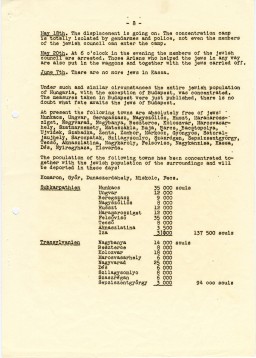
-
World War II in the Pacific - Artifacts/Documents
Media EssayOn December 7, 1941, Japan launched an attack on the American navel base at Pearl Harbor. The following day, the United States declared war on Japan, entering into World War II.
-
World War II in the Pacific - Historical Film Footage
Media EssayOn December 7, 1941, Japan launched an attack on the American navel base at Pearl Harbor. The following day, the United States declared war on Japan, entering into World War II.World War II in the Pacific ended when Japan surrendered on Sep...
-
Anti-Nazi Cartoon
DocumentThis cartoon, “The Modern Mercury” by Jerry Doyle, appeared in The Philadelphia Record, December 7, 1935. The faded large figure in the background bears the label “Olympics ideals of sportsmanship and international good will.” The image of Hitler in the foreground bears the words “1936 Olympics,” “Intolerance and discrimination,” and “Nazism.”

-
Pacific Theater
Media EssayOn December 7, 1941, Japan launched an attack on the American navel base at Pearl Harbor. The following day, the United States declared war on Japan, entering into World War II. World War II in the Pacific ended when Japan surrendered on Sep...
-
Pants belonging to Marjan Glass
ArtifactPants worn by Marjan Glass as he dug anti-tank ditches for the defense of Warsaw, Poland, and then as he hastily fled the city ahead of the German advance on September 7, 1939. Glass, a lawyer, escaped with his wife and three-year-old son, and his wife's mother and brother. He left without taking the time to change from his soiled work clothing. [From the USHMM special exhibition Flight and Rescue.]
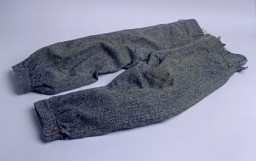
-
Victory in Europe!
FilmGermany's formal surrender on May 7 and VE-Day (Victory in Europe Day) on May 8, 1945, were marked by joyous celebrations all over Europe. This footage shows streets in Paris and London filled with people celebrating the unconditional Allied victory over Nazi Germany and the winning of the war in Europe.
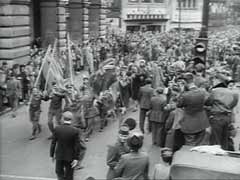
-
Irmgard Huber, chief nurse at Hadamar euthanasia killing center
PhotoPortrait of Irmgard Huber, chief nurse at the Hadamar euthanasia killing center, in her office. The photograph was taken by an American military photographer on April 7, 1945.
